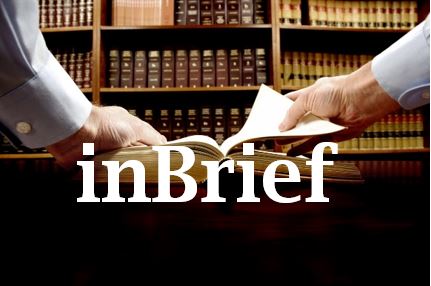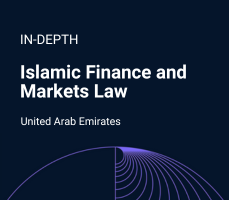This multi-jurisdictional reference guide features a UAE chapter, authored by Danielle Lobo (partner), Abdus Samad (partner) and Alexander Grant (associate), and provides a practical overview of global M&A activity and the legal and regulatory frameworks governing M&A transactions in major jurisdictions worldwide. With a focus on recent developments and trends, it examines key issues, including the relevant competition, tax, and employment law considerations; financing; due diligence; and much more.
Author: afridi-angell
New Anti-Money Laundering Law – Federal Decree-Law 10 of 2025
Introduction
The United Arab Emirates (UAE) has enacted Federal Decree-Law 10 of 2025 Regarding Combating Money Laundering Crimes, Combating the Financing of Terrorism and the Financing of Arms Proliferation (the New AML Law), replacing the 2018 legislation and further strengthening the UAE’s alignment with international financial crime standards. The framework introduces expanded definitions, new and updated offences, enhanced preventive obligations and broader supervisory and investigative powers. It also anticipates the risks associated with digital system misuse, virtual asset channels and the UAE’s developing tax landscape, ensuring that the regulatory regime can respond effectively to emerging financial crime threats.
Expanded predicate crimes and updated core definitions
The reform begins with significantly broader and more precise definitions. The term “Predicate Crime” now expressly includes terrorist financing, proliferation financing, and both direct and indirect tax evasion, along with any felony or misdemeanour under UAE law, whether committed within or outside the UAE. This refinement ensures that a wider range of conduct, including tax-related offences, can give rise to “criminal property” and therefore fall within the anti-money laundering regime, an important development in the context of the UAE’s corporate tax framework.
Core definitions have also been modernised. “Funds” now encompass digital and encrypted assets, and “Criminal Property” extends to instruments and assets used or intended to be used in terrorism or proliferation-related activity. The definition of “Money Laundering” explicitly captures conduct executed through digital systems, encrypted platforms and virtual asset channels, ensuring that the regime keeps pace with technological developments and the shifting methods by which illicit value is moved.
These refinements broaden the legal foundation of the framework and enhance regulators’ ability to address a more diverse and technologically complex risk environment.
Express inclusion of proliferation financing
A significant expansion included proliferation financing, which is now treated as a distinct and fully articulated offence. The New AML Law defines “proliferation of arms” to include activities relating to the manufacture, acquisition, transfer or stockpiling of weapons of mass destruction and their delivery systems, and criminalises the provision or collection of funds in support of such activities. Importantly, knowledge may be inferred from factual and objective circumstances, enabling authorities to take action even where direct evidence of intent is limited, but surrounding indicators strongly suggest an illicit purpose.
By expressly incorporating proliferation financing and lowering the evidentiary threshold, the framework aligns more closely with global non-proliferation standards and strengthens the legal basis for enforcing targeted financial sanctions measures, thereby ensuring that businesses operating in the UAE maintain robust controls and remain vigilant to potential exposure to proliferation-related risks.
Digital systems and virtual asset coverage
Another area of significant development is the treatment of digital systems and virtual asset activity, reflecting the growing relevance of technology-driven financial channels. “Virtual Assets” and “Virtual Asset Service Providers” (VASPs) are now expressly defined, and money-laundering, terrorism financing and proliferation financing offences are recognised as capable of being carried out through digital systems, encryption technologies and virtual asset platforms.
In addition, the introduction of a specific offence targeting, anonymity enhancing virtual asset tools, those designed to obstruct the tracing of transactions or the identification of their parties, further strengthens the regime’s capacity to address technologically enabled concealment.
Together, these provisions ensure that virtual asset activities are subject to the same standards of transparency and oversight applied to traditional financial services, positioning the regulatory framework to respond to emerging digital-asset risks with greater clarity.
Lower knowledge threshold and strengthened penalties
The framework also revises the knowledge standard applied to principal offences, lowering the threshold for establishing awareness of the illicit nature or purpose of funds. For money laundering, terrorism financing and proliferation financing conduct, knowledge may now be inferred from factual and objective circumstances, rather than requiring direct proof of subjective intent. This refinement enables enforcement where risk indicators are ignored or where conduct reflects wilful blindness to the nature of the funds, elevating expectations on both institutions and individuals.
Individuals face higher fines and potential imprisonment, while legal persons may be subject to penalties ranging from AED 5 million to AED 100 million or higher, where fines are linked to the value of the criminal property involved. Courts may also order the dissolution of an entity or the closure of premises in serious cases. Proceedings and penalties relating to these offences do not lapse with time, creating enduring exposure. These measures reinforce the need for proactive, risk-sensitive AML controls supported by effective governance.
Preventive measures and regulation of VASPs
Preventive obligations have been expanded and clarified, particularly with the inclusion of VASPs within the regulated perimeter. Financial institutions, Designated Non-Financial Businesses or Professions (DNFBPs) and VASPs must implement risk-based customer due diligence, verify beneficial ownership, maintain detailed records, implement targeted financial sanctions obligations, and report suspicious transactions to the Financial Intelligence Unit (FIU). Operating without an appropriate licence or registration constitutes an offence.
These obligations integrate virtual asset activity into the established compliance landscape and reinforce the expectation that all financial service channels, traditional or digital, apply equivalent standards of scrutiny and control.
Strengthened FIU and investigative powers
The FIU’s operational authority has been enhanced. It may suspend suspicious transactions for up to ten working days and freeze funds for 30 days without prior notice, with potential extension by the Public Prosecution. Competent authorities may access banking and systems data, impose travel bans, monitor accounts and conduct controlled operations, enabling earlier detection and more coordinated intervention in cases of suspected financial crime.
These powers strengthen the investigative infrastructure supporting the AML framework and enable a more agile response to emerging risks.
International cooperation and asset recovery framework
The New AML Law also enhances the UAE’s ability to cooperate internationally. UAE courts may recognise and enforce foreign provisional measures and confiscation orders without the need for a domestic investigation, and competent authorities are required to prioritise and respond promptly to mutual assistance requests. A forthcoming Cabinet decision will set out procedures for the management and disposal of seized, frozen and confiscated assets, ensuring that asset-recovery efforts are supported by clear operational guidelines.
These developments improve the efficiency of cross-border enforcement and reinforce the UAE’s reputation as a cooperative and reliable jurisdiction in the global AML landscape.
Conclusion
Taken together, these reforms mark a decisive shift in the UAE’s approach to financial-crime risk: expectations on institutions are higher, supervisory powers are broader, and the margin for error is smaller. Businesses operating in or from the UAE, whether in financial services, commercial sectors, professional services, or virtual asset activities, should take this moment to reassess the adequacy of their AML arrangements. In practice, this may require recalibrating risk assessments, strengthening customer due diligence frameworks, enhancing sanctions-screening capabilities and updating escalation protocols to reflect the expanded definitions, lowered knowledge threshold and increased penalties under the New AML Law.
Afridi & Angell regularly assists clients in navigating regulatory developments of this nature. Our team advises on the design and implementation of AML compliance frameworks, conducts gap analyses and risk assessments, prepares and updates internal policies and reporting procedures, and provides targeted training for management and frontline staff. We are well positioned to support organisations in aligning their operations with the New AML Law and ensuring they meet evolving regulatory expectations. ■
The Littler Mendelson Guide to International Employment and Labor Law (UAE chapter)
The Littler International Guide provides an overview of workplace laws and regulations of over 30 countries and territories. This chapter is focused on labor and employment laws in the United Arab Emirates.
The UAE’s new banking law: a step forward for financial innovation
On 16 September 2025, Federal Decree-Law 6 of 2025 (the New Banking Law) came into force replacing UAE Federal Decree-Law 14 of 2018. The New Banking Law represents a comprehensive modernisation of the UAE’s financial regulatory framework, expanding the supervisory remit of the Central Bank of the United Arab Emirates (CBUAE) to cover a broader range of financial and (for the first time) extending CBUAE remit to include technology service providers that support the provision of financial services in and from the UAE.
Licensed financial activities
The New Banking Law broadens the scope of what constitutes regulated financial services, and notably now includes:
– so called “open finance services”; and
– payment services using virtual assets.
Article 62 of the New Banking Law provides that any person carrying on, offering, or facilitating a licensed financial activity regardless of the technology or platform used is subject to CBUAE licensing. Article 62 therefore covers: (1) virtual assets payment tokens or other digital or physical instruments used in connection with the licensed activities, and (2) digital infrastructure providers, platforms, and decentralised applications that enable access to financial services such as payments, remittances, and investments.
The digital dirham and virtual-asset payments
The New Banking Law grants the CBUAE clear authority to issue and regulate the digital dirham and confirms its status as legal tender to provide legal certainty around the use of digital money in the UAE.
Implications for businesses
The New Banking Law significantly expands the regulatory landscape for banks, fintechs, and technology service providers involved in payments, tokenisation, and open finance. Entities operating or planning to operate in these sectors should assess whether their services fall within the CBUAE’s expanded regulatory perimeter. The New Banking Law contemplates a grace period of one year, meaning that businesses that need to adjust their license status to comply with the New Banking Law have till September 2026 to comply.
Given the one-year grace period granted under the New Banking Law, businesses are encouraged to begin their internal reviews and prepare for upcoming implementing regulations. Afridi & Angell is well placed to assist with any required internal gap analysis, as well as the licensing process contemplated by the New Banking Law. ■
Pre-action Letters: Dubai International Financial Centre (DIFC)
This Q&A focuses on Dubai International Finance Centre (DIFC) specific information on all the key issues to consider before issuing or responding to a pre-action better. Furthermore, this Q&A provides country-specific commentary on Practice note, Letter before action (Pre-action or demand letter): Cross-border, and forms part of Cross-border dispute resolution.
Real Estate Dispute: Dubai Court of Cassation Clarifies Conditional Contracts and Manager Liability
The Dubai Court of Cassation (DCC) recently issued an important judgment in a real estate dispute, providing clarity on two key legal issues: the effect of suspensive conditions in conditional contracts and the personal liability of managers of limited liability companies (LLCs) in cases of fraud or misconduct.
Afridi & Angell acted for the buyer in this case.
Facts
– The buyer entered into a sale and purchase agreement (SPA) with a Dubai-based LLC (the seller) to purchase an off-plan property in the secondary market.
– The terms of the SPA required the buyer to pay nearly half the purchase price as a deposit, and the balance to be paid after the developer hands over the property.
– The contract contained additional terms – departing from the standard conditions of the Dubai Real Estate Regulatory Authority (RERA) – allowing the seller to encash the deposit cheques before completion. At the seller’s request, the cheques were addressed in the name of the manager of the seller entity (who was also the sole shareholder).
– The developer failed to hand over the property on time. While the buyer remained willing to proceed, the seller withdrew from the transaction and refused to return the deposit paid. Relying on the additional terms, the seller argued it was entitled to withdraw from the transaction and retain the deposit because the buyer was in breach of the contractual payment deadline.
– The buyer filed a claim against the seller and its manager, while the seller counterclaimed for damages.
Court Findings
Conditional Contracts
– The court found that completion of the sale was made conditional upon the developer’s handover of the project by a certain date. The court agreed with the buyer’s argument that this condition was a ‘suspensive condition’, and since it was not fulfilled within the contractual deadline, the seller was ordered to return the deposit to the buyer with interest.
– In appeal, the seller argued that in the context of an off-plan sale of property, delivery or handover of the project does not mean “actual” delivery of the property by the developer, but rather “constructive” delivery (i.e., transfer of title), which meant that the seller was ready to transfer the title to the buyer at all times. The DCC dismissed this ground and confirmed that pursuant to Articles 420 and 425 of the Civil Code, a conditional obligation is one that depends on the occurrence of a future or uncertain event, upon the happening of which, an obligation will either arise or cease. Where the obligation is subject to a suspending condition, it remains unenforceable until the relevant condition materialises or is fulfilled.
– On that basis, the DCC upheld the finding that the obligations of both parties (buyer to pay the balance and seller to transfer title) fell away as the suspending condition did not occur (i.e., handover of the project by the developer) without attributing a breach to either party. Accordingly, the lower court’s finding was upheld insofar as the deposit ought to be repaid to the buyer with interest. In this respect, the DCC opined that:
“A conditional obligation is one that depends upon a future and uncertain event, upon which the obligation either arises or is extinguished. If the condition is suspensive, it has the effect of suspending the enforceability of the obligation until the occurrence of that event upon which it depends.”
– The DCC held that the suspensive condition in the SPA has the effect of suspending “the enforceability of the plaintiffs’ obligation to pay the balance of the price until the occurrence of the event upon which it depends, namely the developer’s handover of the unit to the seller. The obligation to pay the balance of the price is deemed to exist during the suspension period but remains unenforceable, as it becomes operative only upon the occurrence of the condition.”
Liability of Manager
– The buyer sought to hold the seller’s manager personally liable on the basis of fraudulent conduct. The court upheld the buyer’s claim, finding that the manager had acted fraudulently by:
– depositing the buyer’s funds into his personal account,
– cancelling the seller entity’s trade license and concealing its liquidation during the court proceedings, and
– selling the property to a third party.
– The DCC confirmed that managers of an LLC are not personally liable for the company’s debts, except where fraudulent conduct, deceit, or bad faith is established. On the facts of this case, the DCC found that the manager had acted fraudulently and accordingly upheld the finding of personal liability.
Key Takeaways
– Suspensive conditions: This case illustrates the Dubai Courts’ approach to the interpretation of conditional contracts and obligations, ensuring that where a suspensive condition is not fulfilled, contracting parties are restored to their original positions. Where a contract is tied to a future event (e.g., project handover), and the event does not occur within the contractual deadline, the contract terminates automatically and any payments made must be returned.
– Manager liability: The judgment underscores the courts’ readiness to hold managers personally liable where fraud or misconduct is established. The DCC reaffirmed that, in exceptional cases, company managers can be held personally liable if they act dishonestly or misuse their position. ■
Islamic Finance and Markets Law (UAE chapter), Lexology In-Depth
The United Arab Emirates (UAE) has always provided an attractive environment from which to provide Islamic finance services and products into the Gulf Cooperation Council (GCC) and beyond. In addition to being an established and vibrant global financial centre and having its geographical location in the centre of the Asian and Western financial markets, the UAE also provides a legal system and a judiciary that is familiar with the principles of shariah. This chapter provides an in-depth analysis of everything you need to know about the Islamic finance and markets in the UAE.
The Beginning of the Era of Artificial Intelligence
Artificial Intelligence (AI) has become one of the fastest-growing drivers of global markets, attracting an influx of investment. In the United States, the world’s largest AI hub, funding into AI companies continues to increase as industries from finance to healthcare seek to benefit from its transformative potential.[1]
This is not only limited to the U.S., but it is increasingly mirrored in global markets, particularly in the Middle East. Substantial resources are being directed into AI development in the MENA region, with the UAE being at the forefront of these efforts. In 2024, Microsoft and G42, Abu Dhabi’s leading AI technology holding company, announced a $1.5 billion collaboration to promote responsible and secure AI. In addition, the country has implemented long-term strategic frameworks, including the National Artificial Intelligence Strategy 2031 published by the UAE Minister of State for Artificial Intelligence Office, which aims at positioning itself as a global AI hub.
In 2023, the United States and the United Arab Emirates signed a joint statement on AI cooperation, reaffirming their shared commitment to advancing “safe, secure, and trustworthy AI.”[2] The agreement highlights a joint effort to align regulatory frameworks, foster ethical research, and create opportunities for trade and investment to develop the AI infrastructure. With shared goals of safe innovation, talent development, and cross-border investment, the agreement positions the UAE as a key driver of AI in the Middle East.
The combination of strategic government initiatives, international cooperation, and increasing private and public investment flows suggests that the region is eager to become a major player in the global AI economy.
Legal Issues surrounding AI
Artificial intelligence is advancing faster than many legal systems can keep up. As countries adopt AI across industries, several legal and regulatory questions have emerged. These challenges are particularly relevant in areas such as ownership rights, data protection, and accountability.
Intellectual Property and Ownership
A central issue is ownership of AI-generated work. Most legal systems around the world do not allow an AI system to be recognized as an inventor[3]. While the UAE is unclear regarding its position, it is likely that, in practice, it will adopt a similar approach. In this case, developers usually protect their work by claiming copyright over their codes or by keeping their methods private so others cannot copy them. This leaves a practical challenge: while human-created inventions can be formally protected, many AI-created innovations cannot, creating uncertainty for businesses investing heavily in the sector.
Data Privacy and Regulation
AI relies on vast datasets, making data privacy and regulation critical. To address this, the UAE has established the UAE Council for Artificial Intelligence and Blockchain, a specialised committee tasked with strengthening governance and ensuring effective regulation of AI.[4] These efforts reflect growing recognition that without strong safeguards, AI risks amplifying issues such as existing social biases or exposing sensitive infrastructure to cyberattacks[5]. However, regulatory frameworks are still evolving, the challenge lies in ensuring that innovation does not surpass protection.
Liability and Accountability
AI’s ability to act autonomously raises many questions regarding accountability. If an AI system in an autonomous vehicle causes an accident, who bears legal responsibility: the developer, the user, or another party?[6] While other regulations governing AI were established in the UAE, regulators have yet to examine AI accountability. This legal gap underscores the complexity of attributing responsibility in AI systems.
The Legal and Regulatory Landscape of AI
Dubai has chosen a proactive approach and positioned itself as a regional pioneer in regulating and adopting artificial intelligence.
Early Strategic Moves
The UAE’s 2017 National Artificial Intelligence Strategy laid the groundwork for the country’s development in the AI sector[7]. Dubai has served as a testing ground for implementation with its AI institutions piloting AI applications across healthcare, transport, and government services. By 2017, the UAE Cabinet had established the Council for Artificial Intelligence, chaired by Minister Omar bin Sultan Al Olama, to oversee integration across sectors[8].
Free Zone Innovation
UAE’s financial free zones, such as the Dubai International Financial Centre (DIFC) and Abu Dhabi Global Market (ADGM), amended their pre-existing regulations, such as the DIFC Data Protection Regulation, to incorporate governance of AI[9]. Both free zones have also developed Financial Technology firms (FinTech)[10][11] that create indirect opportunities for AI start-ups to test new applications in a supervised legal environment.
Sector-Specific Regulation[12]
Dubai has also taken steps to regulate AI on a sectoral basis:
Healthcare – The Ministry of Health and Prevention uses AI in medical fitness exams to detect diseases quickly through X-ray recognition. Hospitals in Abu Dhabi employ AI robots for prescriptions, and Dubai has piloted a fully automated medical fitness centre. These steps show how AI is improving efficiency while supporting public health.
Aviation – Emirates Airlines applies AI to optimise flights and passenger services, while Dubai International Airport uses AI for security, logistics, and self-driving ground vehicles. Dubai Customs AI “productivity engine” is expected to save over a million work hours at ports, highlighting AI’s role in efficiency and safety.
Transportation – Dubai’s Autonomous Transportation Strategy aims for 25% driverless journeys by 2030. The RTA is testing autonomous vehicles, using AI to monitor customer satisfaction, manage taxis, and regulate parking. Here, regulation seeks to balance innovation with safety and service quality.
From the United States to the Middle East, fund flows are being directed into private companies, public markets, and national strategies that place AI at the centre of future growth. For businesses and investors, this signals a future where AI is reshaping the economic landscape of the region.
Afridi & Angell advises companies on financing transactions, including venture capital and private equity, as well as mergers & acquisitions. We also advise companies regarding the evolving regulatory landscape in the UAE. ■
[1] https://www.weforum.org/stories/2024/11/healthcare-health-ai/
[2] https://ae.usembassy.gov/united-states-and-united-arab-emirates-cooperation-on-artificial-intelligence/
[3] Article on Legal Issues Related to the Use of Artificial Intelligence
[4] https://ai.gov.ae/ai_council/
[5] https://www.lexismiddleeast.com/eJournal/2020-05-29_6/
[6] Article on Legal Issues Related to the Use of Artificial Intelligence
[7] https://www.lexismiddleeast.com/pn/UnitedArabEmirates/Artificial_Intelligence/
[8] https://uaecabinet.ae/en/fetch-cab-ministers/his-excellency-omar-bin-sultan-al-olama
[9] https://www.whitecase.com/insight-our-thinking/ai-watch-global-regulatory-tracker-uae
[10] https://www.adgm.com/setting-up/fintech
[11] https://www.difc.com/ecosystem/innovation-hub
[12] https://ai.gov.ae/wp-content/uploads/2020/02/AIGuide_EN_v1-online.pdf
Hiring in the UAE: Overview
This Practice Note takes into consideration the legal obligations and practical implications that a foreign employer needs to be aware of when hiring a local or foreign employee in the United Arab Emirates, excluding the Dubai International Financial Centre and the Abu Dhabi Global Market freezones.
UAE Introduces New Humanitarian and Sector-Specific Visa Categories
The UAE continues to reform and expand its immigration framework with the issuance of Federal Administrative Decision 74 of 2022 as amended by Federal Administrative Decision 51 of 2025 (the Decision).
This latest round of reforms introduces new visa categories, clarifies and re-evaluates eligibility conditions, and introduces more flexible humanitarian pathways for resident visas.
What’s New
1. Residence on Humanitarian Grounds Broadened
The UAE now offers a renewable one-year residence permit to foreign nationals from countries affected by war, natural disasters, or unrest without the need for a local sponsor.
Applicants must already be present in the UAE and meet certain housing and financial requirements at the time of application. While permits may be renewed after the initial first-year period, they will be automatically cancelled in the event the permit holder travels outside the UAE.
The Decision also expands family reunification options, allowing citizens and residents to sponsor a broader group of relatives, including parents and siblings. The number of individuals that can be sponsored is dependent on the sponsor’s monthly income, which should be at least AED 10,000 to sponsor up to five individuals and AED 15,000 per month to sponsor six or more. Sponsors are also required to evidence adequate housing for their relatives.
Notably, the Director General of Identity and Foreigners Affairs has the discretion to waive the financial and housing requirements set out in the Decision.
Another key update is that widows and divorcees may apply for residence for themselves and their children if they were resident in the UAE and sponsored by their husband at the time of the death or divorce. Applications must be made within six months of the death or divorce and be supported by documents such as the certificate of marriage, certificate of death or divorce, proof of sponsorship and evidence of financial solvency and adequate housing.
2. New Visa Categories to Drive Economic Activity
The reforms also introduce several new visa categories to support different industries:
i. Business Exploration Visa – For foreigners seeking to explore business opportunities in the UAE. The applicant must demonstrate financial solvency and be engaged in the relevant activity through a foreign business or as a qualified professional.
ii. Event Visa – For those attending exhibitions, festivals, or seminars. The visa must be sponsored by the host of the event.
iii. Entertainment Visa – For visitors participating in commercial gaming activities, sponsored by an entity fully licensed to organise commercial gaming activities in the UAE.
iv. Cruise Tourism Visa – A multiple-entry visa for passengers aboard cruise ships as well as permits for cruise ship workers.
v. AI Specialist Visa – Single or multiple-entry visas may be issued to professionals specialising in the field of artificial intelligence sponsored by an entity that specialises in the field of technology.
vi. Revised Truck Driver Visa – Visas for foreign truck drivers issued on a single or multi-entry basis. Applicants must be sponsored by licensed shipping or transport companies and hold health insurance.
These visa categories reflect the UAE’s focus on innovation, tourism, and logistics in furtherance of its economic and developmental goals.
3. Visa-on-Arrival Access for Indian Nationals
The recent reforms also facilitate easier entry for Indian nationals and their accompanying family members, who may now obtain visas on arrival in the UAE if their passports are valid for at least six months and they hold a valid visa, residence permit, or green card issued by the United States of America, the United Kingdom, the European Union, Canada, Japan, Australia, New Zealand, Singapore, or South Korea.
4. Grace Periods and Validity Extensions
The Decision also introduces more flexible post-expiry grace periods, which allow residents to continue to stay in the country without incurring financial penalties after their residence permits have expired. These include a 180-day grace period for Golden, Green (issued to self-employed, skilled professionals and freelancers) and Blue (issued for individuals who have made significant contributions to the protection of the environment) visa holders, widows, divorcees and graduates. A 90-day grace period is available for skilled workers and property owners and a 30-day grace period for all other categories of visa holders.
Family members of Golden, Green and Blue visa holders are also permitted to retain their residency even if they remain outside the UAE for more than 180 days. The UAE generally requires residence permit holders to enter the country every 180 days.
Why It Matters?
The Decision reflects the UAE’s forward-looking immigration policy, commitment to harmonising talent attraction, humanitarian sensitivity, and administrative ease. In a world grappling with displacement, technological transformation, and evolving mobility norms, the UAE continues to position itself as both a safe haven and a hub of opportunity. ■







